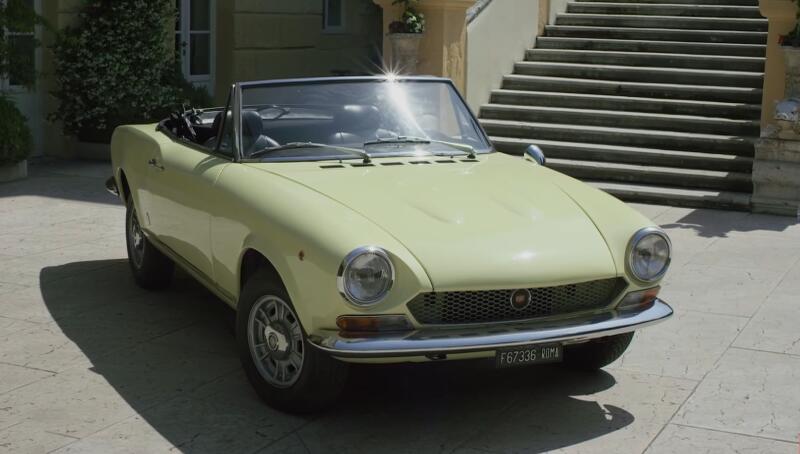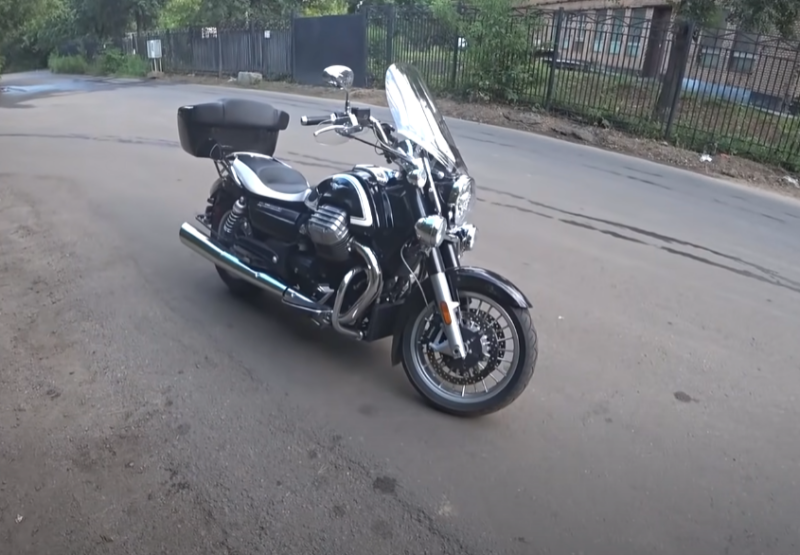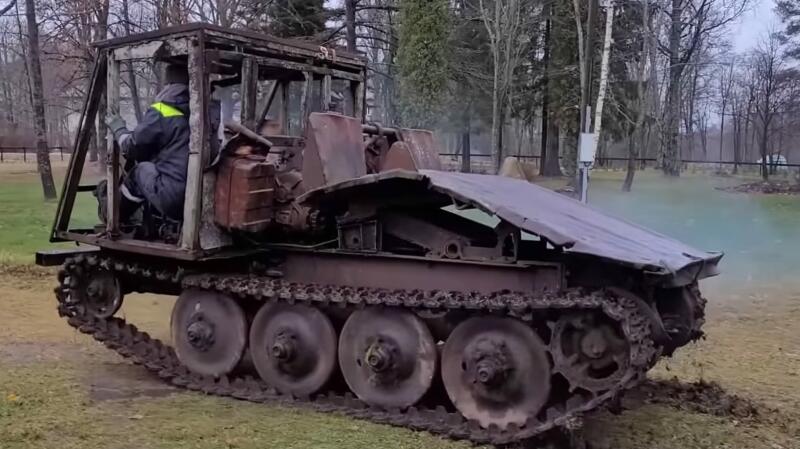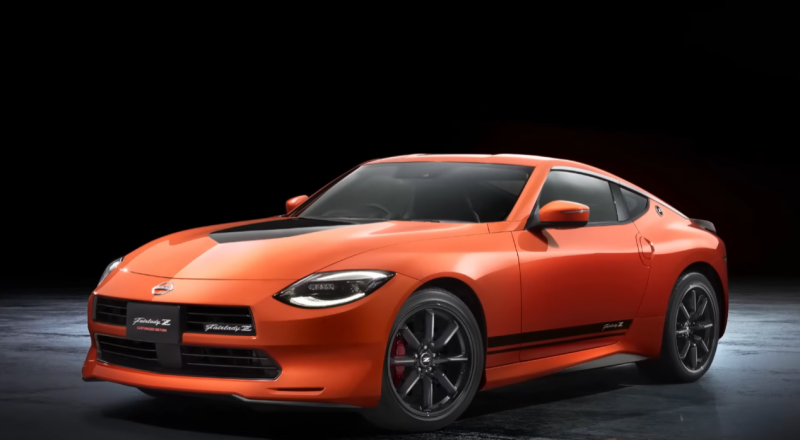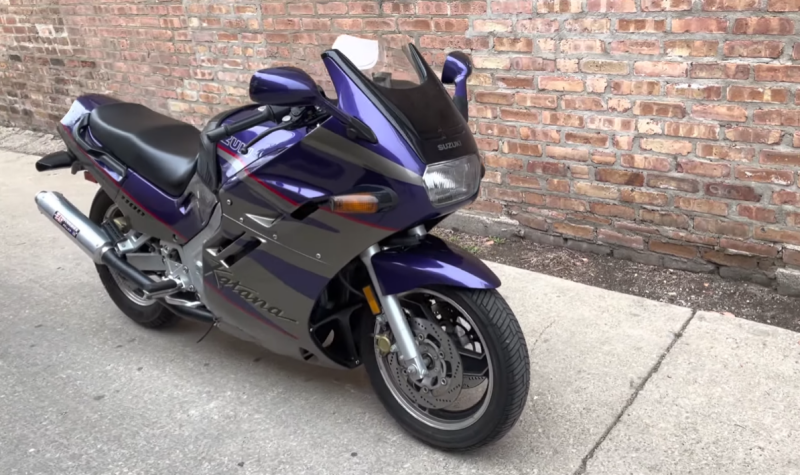And yet, Lancia still holds the record for the most successful automaker in rallying. And this despite the fact that the Italian brand officially ceased participation in the World Cup at the end of the 1993 season. Lancia has ten WRC championship titles and another FIA International Championship for Manufacturers titles, for a total of eleven.
 Lancia Stratos. Photo: Youtube.com
Lancia Stratos. Photo: Youtube.comMotorsport fans will immediately think of the great Fulvia, the fast Stratos, and the unbeatable Delta (6 titles in a row)... but everyone forgets about the 037! Yes, the 1983 won only one marque championship (in XNUMX), but it was a great car, because this Lancia is the only rear-wheel drive rally car that managed to beat the all-wheel drive Audi Quattro in the world championship!
Stratosphere
The ancestor of the "037th" was the Lancia Stratos, which confidently dominated the European and World Rally Championships, winning the latter three times in a row: in 1974-76. And individual victories at the stages, and already without any factory support, continued until the beginning of the 80s. The total superiority of Lancia Stratos on rally tracks led to the fact that the championships of those years were called the “statosphere”. But in the late seventies, within Fiat, and Lancia was part of this "group", the following hierarchy was adopted in relation to motorsport: Fiat competes in rallies, Lancia in sports prototype racing, and Ferrari in Formula 1. And the Stratos were replaced by the Fiat 137 Abarth.
✅ Group H: production models
✅ Group A: 5000 homologated copies
✅ Group B: 200 homologated copies
✅ Group C: sports prototypes, without homologation
But in the early eighties, FISA changed the regulations regarding rally and touring racing classes, dividing them into groups, after which the Fiat bosses decided that it was time for Lancia to return to rally!
 Lancia 037 Rally, in Martini Racing livery. Photo: Youtube.com
Lancia 037 Rally, in Martini Racing livery. Photo: Youtube.comRecall that in order to participate in the World Rally Championship in "Group B", each manufacturer had to produce 200 homologated cars allowed for use on public roads. At the same time, only minor modifications were allowed for racing options. These stringent requirements led to the birth of "project 037".
Abarth played an important role in the development of the 037. Fiat bought this company back in 1971, and since then the Italian company has been associated with charged versions of Italian subcompacts. In the case of Project 037, Abarth did most of the design work.
 The road version of the 037 was called the Stradale. Photo: Youtube.com
The road version of the 037 was called the Stradale. Photo: Youtube.comPresented at the 1982 Turin Motor Show as the Lancia Rally 037, the car was developed in collaboration with Lancia's racing department, the Abarth Research Center and Pininfarina. A typical situation for a cash-strapped company: for the 037 project, Lancia used everything they could from the Beta Montecarlo. In particular, the central part of the body was borrowed entirely!
 473-horsepower ring Lancia Beta Montecarlo: another ancestor of the 037th. Photo: Youtube.com
473-horsepower ring Lancia Beta Montecarlo: another ancestor of the 037th. Photo: Youtube.comThe body of "La Zero Trentasette" (zero thirty-seventh) was made of fiberglass and reinforced with Kevlar, and the "clamshell" design provided quick and convenient access for mechanics to all the most important "service points" of the car, which is extremely important in a rally, because to service cars occurs between the special stages. This solution made it possible to replace the gearbox in record time - in 12 minutes! The suspension of all four wheels was made on double wishbones, and two Bilstein shock absorbers were installed at the rear for each wheel.
Engine
Since Audi used turbos in the rally program, Lancia's chief engineer, Aurelio Lampredi, also applied supercharging. True, not a turbocharger, like in Audi, but a "Roots-type mechanical volumetric supercharger." Unlike a turbocharger, the compressor delivers strong low-end traction without the “turbo-boost” that is critical in a rear-wheel drive rally car.
Characteristics of the "civilian model":
✅ Lancia (Fiat Abarth) Tipo 232 AR4
✅ 205 horsepower at 7000 rpm.
✅ acceleration to 100 km/h: 5.9 sec.
✅ Maximum speed: 225 km/h
✅ Curb weight: 1170 kg
Early Lancia 037 Rally racing cars were equipped with a Weber carburetor, the same as on the road versions of the Stradale and Fiat 131 rally cars. A little later, Lancia released the Evo-1, equipped with Bosch Kugelfischer mechanical fuel injection.
 The rear suspension had four attachment points for the upper and two for the lower arms. Photo: Youtube.com
The rear suspension had four attachment points for the upper and two for the lower arms. Photo: Youtube.comThe final specification for "La Zero Trentasette" was the Evo-2, developed for the 1984 World Rally Championship and featuring an improved Abarth engine with a displacement increased to 2.1 liters. The changes increased the output by 20 horses, and as a result, the Evo-2 developed 325 horses, at 8000 rpm.
Rally career Lancia 037
In 1982, the Lancia Martini team included two crews: Markku Ahlen and navigator Ilkka Kivimaki, as well as Attilio Bettega and Maurizio Perissino. As a European rally specialist, Adartiko Vudafieri, the 1981 European rally champion, was invited.
Several 1982s were given to the semi-factory Jolly Club team, for Andrea Zanussi and (after the introduction of the Evoluzione variant) for Tonino Tognana. The 1982 factory program included six out of twelve rounds of the World Rally Championship (not all results were included in the championship), as well as performances in the European and Italian rally series. The 47 European Rally Championship (ERC) consisted of XNUMX events, which were assigned coefficients from one to four. The higher the coefficient, the more points are awarded to the participants.
Debut: Rally Costa Smerelda
Lancia introduced the 037 on the same day they approved its homologation. The Rally Costa Smerelda was the twelfth round of the European Championship and took place on gravel roads along the coast of Sardinia. Lancia initially entered two cars, one for Markku Allen and one for Attilio Bettega. Both cars were equipped with carburetor engines developing 250 horses.
 It was only possible to drive the 037th sideways! Photo: Youtube.com
It was only possible to drive the 037th sideways! Photo: Youtube.comAlain's car had problems with the brakes even before the start, and although Markk managed to catch up with Michele Chinotto's Audi Quattro, and even set the best time on the third special stage, the Lancia driver retired due to problems with the gearbox. Bettega also had problems: and although the radiator pierced at the beginning of the rally was replaced, problems with the gearbox caused the second 037 to retire.
Evolution
The main factor that contributed to the incredible pace of development of the Group B cars between 1982 and 1986 was the “evolution” rule. Evolution options allowed manufacturers to make changes to the homologated model, with the first "evolution" allowed immediately after homologation, and subsequent ones every twelve months. For homologation of each Evolution, it was necessary to create only twenty similar copies.
1982: PACE Petroleum Rally - first win
Alain and Kivimäki led from start to finish, set the fastest time on all but one of the special stages, and finished just under two minutes ahead of Russell Brooks, who competed in the Vauxhaull Chevette 2300 HSR, taking the first victory for the Lancia 037 Rally!
 Turns on the Lancia 037 Rally had to pass in a spectacular skid. Photo: Youtube.com
Turns on the Lancia 037 Rally had to pass in a spectacular skid. Photo: Youtube.comIn 1983, two-time world champion Walter Röhrl joined Lancia, which allowed the Martini Racing team to beat Audi in pfxtnt among marques. The pilots of the team managed to win the following stages:
✅ Rally Monte Carlo
✅ Tour de Corse
✅ Acropolis
✅ Rally New Zealand
✅ Rally San Remo
Martini Lancia is 2 points ahead of the Audi Sport team! True, in the individual championship, Walter Röhrl lost to Audi pilot Hann Mikkola.
When asked to name my favorite car, provided that I can choose only one, I answer: Lancia 037. This little girl and I were made for each other! You had to feel it all the time “with your fingertips”, otherwise you will not succeed with it! I also remember one of the Audi engineers asking me about a gearbox that could shift without depressing the clutch. I drove him 5 kilometers, after which he got out of the car and said: now I understand why you defeated us!
In the European Rally Championship, the Lancia Rally 037 also secured three consecutive titles, from 1983 to 1985, and two more titles in the Italian Championship in 1983 and 1985. La Zero Trentasette is the last rear-wheel drive car to win the World Rally Brand Championship in an era when budgets and customizations were nearly limitless.



